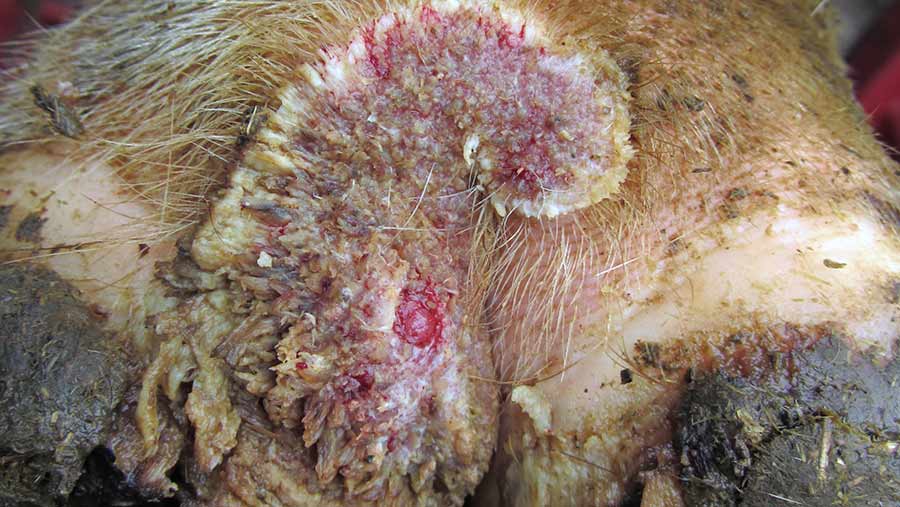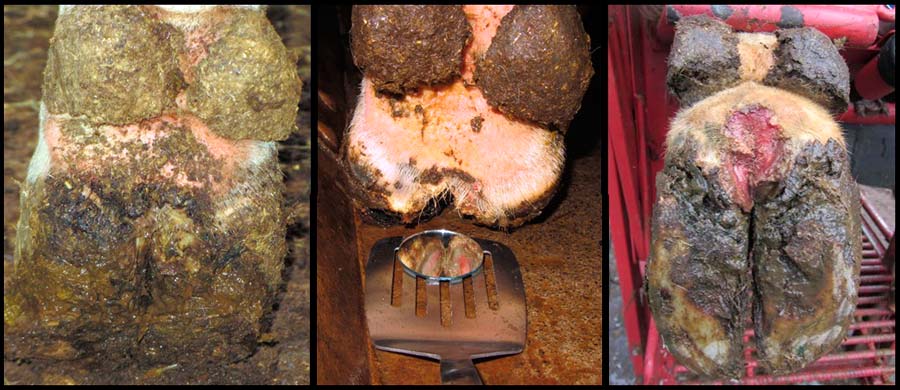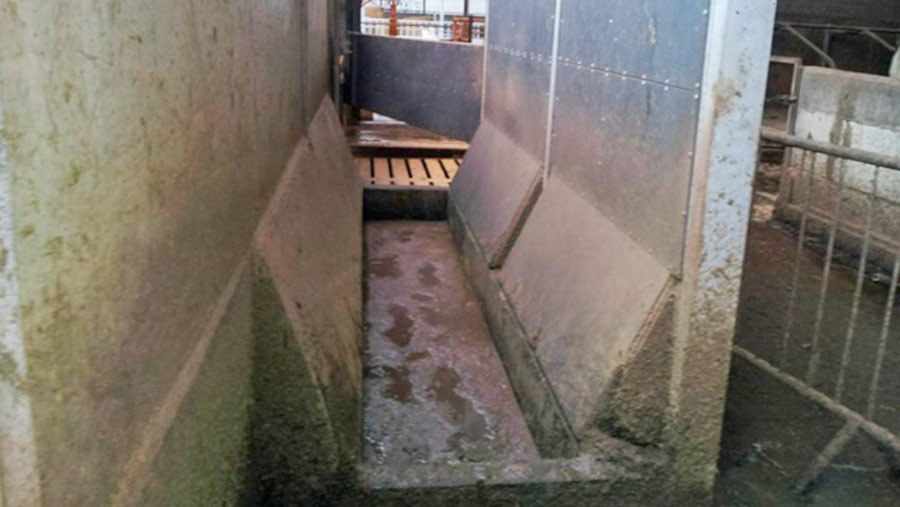Expert advice on controlling digital dermatitis

Digital dermatitis is a highly infectious and costly foot lesion affecting many UK herds, with cases often being overlooked, especially in dry cows and youngstock.
Routine foot-trimming, foot-bathing and “blitz treatment” of diagnosed cases are key to getting the problem under control and preventing knock-on effects to fertility and milk yield.
Independent vet Sara Pedersen of Farm Dynamics explains how farmers can best tackle the infection and gives tips on what she’s seen work well in herds that are getting on top of it
What is digital dermatitis (DD)?
It is an infection of the skin of the cow’s foot, presenting as red, raw and painful lesions most commonly on the skin between the heels. It is caused by a specific group of bacteria called treponemes.
These are highly motile and very invasive. However, crucially they cannot cause digital dermatitis unless skin damage has occurred first. Due to the invasive nature of the bacteria they burrow into the skin, where they can encyst and lie dormant, creating a carrier animal.
See also: ‘Blitz’ treatments of topical antibiotics cut digital dermatitis
How can it be detected?
Unfortunately, not all cases of DD result in lameness, so mobility scoring isn’t sufficient to pick up all infections, particularly in the early stages. Cows that are visibly lame due to DD are just the tip of the iceberg, so the on-farm prevalence is often underestimated.
To identify infected cows, feet need be inspected individually by washing and taking a closer look between the heels for any signs of infection.
How should it be treated?
Just like any infection, the key to treating DD successfully is to catch it early before the bacteria have a chance to burrow into the skin and encyst.
It is important the lesion is treated correctly and follow-up treatments are given – one-off treatments are rarely sufficient for an established lesion.
Best practice:
- Lift the foot in a crush
- Wash the lesion with clean water
- Dry thoroughly
- Spray with a licensed topical antibiotics spray
- Leave to dry for 30 seconds and then spray again
- Repeat treatment daily until the lesion has scabbed over and is no longer painful

How can it be prevented?
Firstly through biosecurity measures. If you don’t have DD in your herd, it is critical to keep it out – nothing should come on to the farm unless it is meticulously clean – this includes people, animals and vehicles.
Even if DD is already present on a farm, it is still important to consider biosecurity between groups of stock.
Secondly, hygiene is critical. Slurry doesn’t only act as a short-term transmission medium, but it also causes the damage required to the skin to allow DD to take hold. So improving cow cleanliness is key.
Can foot-bathing play a role in reducing incidence?
If done correctly, foot-bathing helps to keep feet clean and improve hygiene. Therefore it plays an important role in prevention through disinfection of the feet.
It also has another role in preventing the recurrence of dormant lesions. It is often the recurrence of these lesions that drive new outbreaks, rather than new infections alone.
Best practice advice for foot-bathing
- Which animals? All at-risk animals should be foot-bathed – milkers, dry cows and youngstock
- Frequency This is farm dependent. Generally the more often the better. Where infection pressure is high, daily foot-bathing is often advised
- Siting the foot-bath The most common place is on the return lanes from the parlour, as this allows for good cow flow through the bath and also reduces this risk of fumes from the disinfectant entering the parlour
- Which chemicals? There are lots of different chemicals used in foot-baths, but relatively few have robust data behind them to prove they work, which is why formalin and copper sulphate remain the most popular. However, both must be used with caution, so it is important to consult your vet about what chemical is best
- Foot-bath dimensions At least two, preferably three, dunks of each hind foot is the target, which for an adult Holstein cow requires a foot-bath that is 4m long. It is also crucial the foot is fully immersed, requiring a depth of 10cm. To reduce the volume of solution in the foot-bath it can be narrowed at the base to 60cm and sloping sides added to make sure cows don’t straddle the sides

Is there a group on the farm that act as a reservoir for infection if not treated ?
We often focus on the milkers and overlook the dry cows and youngstock. However, these groups need attention too.
Cows may pick up the infection during the dry period and then go down with a case of DD early in lactation when their immunity drops, so incorporating dry cows into the foot-bathing regime is important.
We also know heifers that experience DD prior to first calving are much more likely to have a further case in their first lactation, give less milk and take longer to get in calf.
If you are seeing cases in youngstock it is important to start preventive measures at least three months before the age at which you see lesions.
Can you suggest any good-practice tips that you have seen work well?
If you really want to nip DD in the bud once and for all then a blitz treatment approach is needed. This involves treating all infected animals at once to reduce the infection pressure in the herd and environment, thus reducing risk to uninfected cows.
It is then important to stop dormant lesions recurring and new cases establishing through improved hygiene, efficient foot-bathing and active surveillance.
